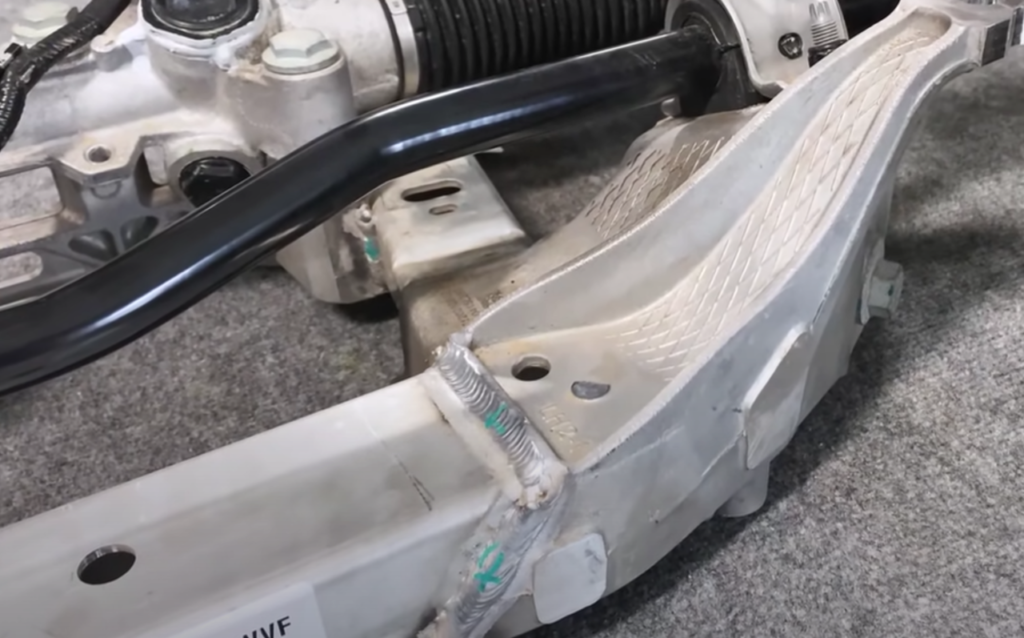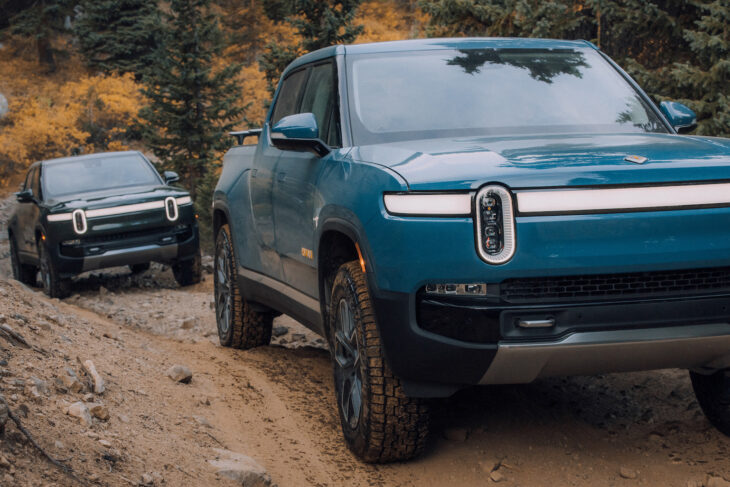By Andrew Halonen, Mayflower Consulting LLC.
Electric vehicles (EVs) and electrification of transportation in general are topics that dominate news outlets, magazines, and social media. OEMs, materials manufacturers, and those looking to capitalize on this new electrified economy are constantly sharing a barrage of information and data on new business models, the projected performance of EVs, and the integration of automation.
From the consumer perspective, the value of electrification is quickly summarized by its cost, range, and charging speed. Currently, EVs don’t achieve the range of internal-combustion engine (ICE) vehicles and also have long charging times, which limits their value to consumers. In this regard, when considering how to increase the inherent value of EVs, the natural response from those not directly involved in the industry is to talk about cutting the vehicle weight in order to extend range. However, from the insider’s perspective, the situation is more complicated due to the fact that government requirements are different for EVs than for ICEs. New start-ups tend to make different lightweighting decisions than established OEMs, as they design their production facilities from scratch and set them up to meet the specific requirements of new technologies.
In general, EV battery technology requires huge investments to develop and implement in vehicles. Also, because battery systems are extremely heavy, EVs are heavy as well. As the weight of the batteries and vehicle increases, the load-carrying components need to be stronger, while also being economical in order to compensate for the powertrain investment. The value proposition on lightweight materials needs to adjust to the new EV business model.
Electric Vehicle Weight
The question as to why EVs are so heavy stems back to their power source. The energy density of a gasoline-powered engine is 45 MJ/kg (which is comparable to a diesel engine), whereas lithium-ion batteries have an energy density of around 0.3 MJ/kg.1 In other words, gasoline has over 100 times more energy per unit of weight than most EV batteries, so naturally an OEM needs to pack a lot of batteries into an EV to meet consumer’s expectations regarding performance and range. For example, the EV industry leader Tesla installed 7,920 battery cells on the new Model S Plaid.2
For the light duty vehicles that are produced with both ICE and EV powertrain options, the weight of the EV is typically around 1,000 lbs (500 kg) heavier, as one will see in the following examples. According to Edmunds, the Rivian R1T electric pickup (pictured above) includes a 135-kWh battery pack, which contributes to its massive 7,148 lb curb weight—making it a full ton heavier than the Ford F-150 SuperCab and heavier than any other mid- or full-sized truck.3 Some other EVs manage to be even heavier than the Rivian R1T, such as the Chevy Silverado EV, which is reported to weigh a little over 9,000 lbs (4,082 kg).
Another example is the Ford Mustang Mach E, which features a 454 hp motor and weighs 1,278 lbs (580 kg) heavier than the gas-powered Mustang with a 2.3 L turbo engine. The company didn’t seem to see a business case for cutting more weight. Instead, the priority was to meet the consumer expectation of 300 miles of range, performance, and a price point that will keep sales brisk. So far, Ford’s strategy is working, as the Mach E is the first EV sedan to create serious competition for Tesla. The Mach E earned the Top Pick rating from Consumer Reports, beating out the Tesla Model 3.4
Commercial trucking faces similar challenges in regards to balancing vehicle weight against driving range, with the added concern of needing to maintain a large payload (cargo capacity). In Class 8 commercial trucks for regional use, the EV version can be as much as 3,000–6,000 lbs (1,361–2,722kg) heavier than the ICE model. For example, the Mack LR vehicle commercial truck with a diesel engine has a gross vehicle weight of 43,000–72,000 lbs (19,504–32,659 kg),5 while the electric version with a 376 kWh battery weighs 66,000 lbs (29,937 kg) with only 100 miles of on-the-job driving range.6 Note that the gross vehicle weight comprises both the weight of the empty vehicle plus the weight of the maximum payload that the it can haul.
Aluminum Use in EVs
Aluminum is widely used in the automotive industry as a lightweighting material, largely due to its strength-to-weight ratio. A number of EVs utilize aluminum in a variety of components. For example, the Ford Lightning EV is built on the F-150 model design, which already has considerable aluminum in the body and closures. A notable addition to the Lightning is the use of large cast aluminum swing arms, essentially the rear lower control arms, to support the increased weight.
Most vehicles use hybrid designs that utilize a mix of materials. In this case, aluminum is often used as closures, where it can be easily joined to steel structures. The Rivian R1T pickup uses steel in most of its body frame. However, the closures are made from aluminum sheet stampings, the rocker and cross-members from aluminum extrusions, and the knuckles and control arms are made from aluminum castings and forgings. Compared to the previous Tesla Model 3, which utilized a lower-cost welded steel front subframe, the premium-priced Tesla S Plaid shifted its front subframe toward a hybrid design that incorporates cast aluminum on the corner nodes, which are joined by aluminum extrusions via welding (Figure 1).7

Notably, many vehicle manufacturers are using heavier steel in their EV models—even for closures. For example, it came as a surprise when General Motors announced that its new electric Chevy Silverado will deploy steel in its hood and doors,8 even though the company already uses aluminum closures on the gas-powered version of its Silverado.
The shift from lightweight aluminum to heavier steel is counter intuitive, as it is well known that a lighter vehicle will go further on a given amount of battery power, thus increasing driving range. However, these decisions are multi-faceted. Lightweighting may not be the OEMs primary focus over other considerations, such as the cost of the material, ease of manufacturing, the capital cost of new equipment and tooling, the final product cost, estimated profit, and more. As noted previously, the high cost and massive weight of EV battery technologies continues to be a major concern. The industry has been predicting battery cost and weight reductions. However, in 4Q 2021, we saw a significant increase in raw material costs, as much as US$7,000 per vehicle. The Russia-Ukraine conflict has compounded the current supply chain issues. Costs are going up, yet consumers aren’t going to get more value.
In a discussion on LinkedIn,9 the question regarding the use of aluminum closures for lightweighting in EVs garnered some interesting answers from the industry as to why some OEMs might be less interested in lightweighting. One reason is the cost to weight savings ratio. “These vehicles have a ~9,000 lb curb weight,” stated Eric LaBelle, technical manager at 3M Automotive. “The incremental weight that can be saved [via] material selection barely moves the needle and doesn’t justify the cost.”
Another significant issue that was brought up involved the government’s role in lightweighting. “The business play for weight on EVs is worse than for ICE [vehicles],” pointed out Roger Townsend, vice president of Vehicle Engineering, Atlis Motor Vehicles. “As [lightweighting in EVs] is not subsidized by emissions regulations, its contribution to range is not as high as [it is in regards to other aspects, such as] motor, drive train, battery, and controls efficiency.”
The Effect of Government Regulations on Vehicle Weight
In North America, the U.S. government regulates the vehicle fuel economy of ICE vehicles via the Corporate Average Fuel Economy (CAFE) standards, which measure an OEM’s fuel economy (miles per gallon) across its entire fleet in a given model year, including passenger vehicles, SUVs, and passenger trucks. Since lighter weight vehicles have lower fuel economies, car manufacturers across the industry turned to lightweighting in order to meet the CAFE fuel economy standard and avoid penalties and fines. This was a major driving factor in the use of automotive aluminum—particularly in large SUVs and trucks, which saw greater benefits from lightweighting, since smaller cars were generally lighter weight and had lower fuel economies to begin with.
However, since EVs use electric drivetrains, they are zero emission vehicles. Therefore, fuel economy is not a concern and the CAFE regulations do not apply. Gross vehicle weight is not a priority. Instead the design of EVs is driven by other factors—cost, range, performance, and the ability to add cool features that sell cars. For those selling lightweight materials, the game has changed, especially for low-cost EVs.
Similarly, Class 8 commercial trucks receive compensation from the U.S. government for utilizing environmentally friendly powertrains, regardless of weight. Both natural gas and electric commercial trucks are able to receive a waiver from the Department of Transportation to operate at 82,000 lbs on the interstate, whereas diesels are limited to 80,000 lbs. Commercial truck OEMs are pushing the weight issue even further, as they are currently seeking a government waiver for a total of 6,000 lbs, which would match the increased weight of the BEV powertrain. It is likely to be much easier to convince lawmakers to allow powertrain technology to run heavier than it is to remove thousands of pounds from a commercial truck or to convince weight-sensitive fleets to carry less payload.
Ensuring the Value of Aluminum in EVs
As the impact of the CAFE regulations takes a back seat to electrification, the lightweight material supply base needs to go back to the drawing board in order to create new value for the EV market. Rather than focusing on cutting weight, other benefits of aluminum need to come into play. For example, Tesla introduced a new large casting, known as a mega- or giga-casting, for its Model Y vehicle. This component is a single-piece aluminum casting that replaces many steel stampings that had to be welded by a number of large robots. By comparison, this aluminum cast part can be produced in only a few minutes with the vacuum high pressure die casting (HPDC) process using an alloy that achieves suitable properties without heat treatment. In all of Tesla’s discussions regarding the development of the mega-casting, none of the company’s representatives (not even Elon Musk) speak about the weight reduction aspects of the design.10 Rather, the company highlights the value of the mega-casting as being the manufacturing efficiencies that it provides, including piece-count reduction, fewer robots, and less floor space.
Generally speaking, are mega- or giga-castings lighter weight? According to Mark White, executive director of Alumobility and long-time vehicle structures engineer at Jaguar Land Rover, the answer is “No.” He noted that the available data shows that Tesla’s one-piece casting is 20% heavier (8 kg) over the sheet parts that were replaced.11 Castings are well-suited for stiffness-driven designs, though the limitation is that their wall thickness can only go down to 2-3 mm compared to 0.7 mm wall thickness in sheet. White suggests that the best vehicle solution combines a mixture of castings and sheet or extrusions.
Prof. Wolfram Volk, the department head for Forming Technology and Casting at the Technical University of Munich provides another perspective, noting the many factors around OEMs decision between choosing mega-castings versus sheet metal.12 Volk explains that mega-castings are much more likely to be used at companies with new manufacturing plant builds, rather than those already invested in sheet metal processing. Overall, mega-castings are not likely to be widely used for either low volume vehicle builds, due to the high capital cost for equipment, or for really high volumes, because the tool life for these castings is 20-30 times lower than stamping. Casting tooling life is dependent partially on alloy, as non-heat treated structural aluminum alloys result in decreased tooling life compared to the highly recycled 380 aluminum alloys that are commonly used for transmission and motor housings.
The long-term implementation of aluminum mega-castings aside, they illustrate the need for the aluminum industry to showcase the value of the material outside of lightweighting. This value could be demonstrated simply by reordering the material’s priorities from addressing low density to ensuring its high performance benefits, such as corrosion resistance (which can minimize warranty claims in finished cars). A further means of ensuring growth in EVs is to innovate in aluminum alloying and processing, as well as bringing forth lightweight solutions at a lower cost. For crash management and battery protection, aluminum producers should promote current successes, in which extrusions have been used for vehicle safety. Aluminum companies should use benchmarking data to understand past OEM decision-making and prioritize the needs of the vehicle model to develop and innovate new technologies.
References
1. Schlachter, Fred, “Has the Battery Bubble Burst?” APS News, Vol. 21, No. 8, August/September 2012.
2. Kane, Mark, “Watch Tesla Model S Plaid’s Battery Get Opened And Described,” Inside EVs, October 13, 2021.
3. Elfalan, Jonathan, “World Exclusive: We Tested the 2022 Rivian R1T and It’s the Quickest and Best-Handling Truck Ever,” Edmunds, November 9, 2021.
4. Bartlett, Jeff S., “Ford Mustang Mach-E Replaces Tesla Model 3 as Consumer Reports’ Electric Vehicle Top Pick,” Consumer Reports, February 17, 2022.
5. “LR® Model Specs,” Mack Trucks.
6. “LR Electric Specs,” Mack Trucks.
7. “Front Cradle and Suspension | Tesla Model S Plaid Teardown (video),” Munroe Live.
8. Murphy, Tom, “Chevy Silverado Charges into BEV World,” Wards Auto, January 5, 2022.
9. Halonen, Andrew, LinkedIn Post & Discussion, February 2022.
10. “Elon Musk explains how Giga casting works for the Model Y (video),” Financial Literacy.
11. Halonen, Andrew, LinkedIn Post & Discussion, March 2022.
12. Fuchslocher, Götz, “Megacasting: a chance to rethink body manufacturing,” Automotive Manufacturing Solutions, February 9, 2022.
 Andrew Halonen is president of Mayflower Consulting, LLC, a lightweighting consultancy that provides strategic marketing, market research, and business development for high tech clients. Halonen works with castings, extrusions, brakes, and new material development programs. Contact him at: www.lightweighting.co.
Andrew Halonen is president of Mayflower Consulting, LLC, a lightweighting consultancy that provides strategic marketing, market research, and business development for high tech clients. Halonen works with castings, extrusions, brakes, and new material development programs. Contact him at: www.lightweighting.co.
Editor’s Note: This article first appeared in the April 2021 issue of Light Metal Age. To receive the current issue, please subscribe.

